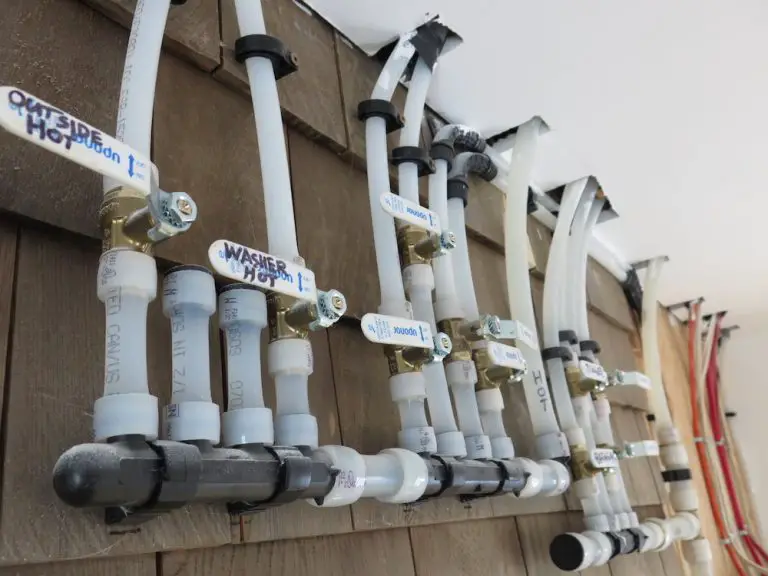
There I am, center, on a reroofing project that also involved installing an openable roof window. Installing a new roof is also a good time for related jobs like this.I get a fair number of emails from homeowners looking for advice on getting the best possible new roof, and the questions are always similar. How do I choose an honest roofer? Why are price quotes so different from one roofer to another? Do I need more roof vents like my roofer says? What’s ice-and-water shield? How do I tell good shingle brands from bad ones?
Three quarters of homes in North America have asphalt shingle roofs. I like this option and use it all the time on projects of my own. The important thing to understand as you’re gearing up for a new roof is that the next asphalt shingle roof you have installed (or install yourself) could last a long time or not so long. The quality you end up with depends on the materials you choose and the way they come together. Fifty years of good-looking, leak-free service is certainly an attainable goal for the best asphalt shingles these days, and there are four things that make it happen:
- Choose a reputable roofer (or do good work yourself)
- Choose great shingles
- Optimize attic ventilation
- Use a durable underlay system
New Roof Tip#1: Choose a Reputable Roofer
Just because someone claims to be a tradesperson, it doesn’t mean they’re any good. In fact, many “professional” tradespeople are anything but pros. So how do you find a good, honest, reliable roofer? You need to do two things. First, search for someone in your area who is registered with some kind of quality assurance program that requires members to hold insurance, business licenses and have a minimum time in the trade. I direct friends and family to www.renomark.ca, but there are others. Will someone registered with an organization automatically be good? No, that’s why you need to do something simple that most people don’t do. Ask for at least three references from every roofer you’re considering, then call these past clients up and ask them how things went. Was the work completed in a reasonable time? Were the workers neat and polite? Did the roofer stick to the budget? Don’t skip this step.
When it comes to assessing the various estimates offered by roofers you need to understand a few things. First, if you live in an area that gets serious winter, like I do, insist in the installation of a tough underlay installed on at least the bottom three feet of your roof. This is generically called “ice-and-water shield” and it ensures leak-free performance even if a berm of ice holds back pooled water on your roof some day. Also, look for underlay to be installed over the rest of the roof before this shingles go down.
New Roof Tip#2: Choose the Best Shingles
Improved tar, gravel and substrates have boosted potential shingle lifespan enough that 40 and 50-year shingle warranties are common. Some shingles even have a lifetime warranty. Most of these gains come from the use of fiberglass as a shingle substrate instead of the more traditional organic felt. Fiberglass shingles look the same as organic on your roof because they’re impregnated with the same kind of tar and gravel used as part of all asphalt shingles. That said, fiberglass is much more resistant to heat than felt, and this makes all the difference. Even on very hot, unventilated roof surfaces, fiberglass shingles consistently deliver their expected lifespan without curling. You also get a higher fire rating with fiberglass. In addition, fiberglass shingles are about 30% thinner than organics for a given quality of shingle, making them easier to install on ridges, as part of woven valleys or any other application where bending of shingles is required.
How can you tell good brands of shingles from not-so-good? All shingle companies make decent shingles, though some brands have had shingles fail from premature aging. These problems don’t happen across the board for a given brand of shingle, nor do they happen all the time. My solution to this uncertainty is to go with a brand of shingle that has never had a premature failure issue to my knowledge. GAF and Certainteed are two brands I trust completely. I have installed BP fibreglass shingles on a small job of my own. BP has had failure problems in the past with non-fibreglass shingles, but their fibreglass options have a good track record. One thing I always recommend is choosing shingles at or near the top of the line. Since most of the cost of a shingling job is labour, it makes sense to minimize the time between reroofing jobs by paying a little more for premium shingles.
How do you assess a price estimate for roofing? Start by getting five quotes. In the case of my parents-in-law, one roofer offered a price of $8,000 for their roof. Another roofer would do the job for more than $12,000. Why the massive difference? If you’re not used to dealing with tradespeople, you might assume that the extra cost is due to better materials or workmanship. That’s what people often believe, but the reality is different. The materials quoted on their $12K estimate were no better than what was quoted on the $8K option. The difference is an attempt to earn windfall profits. Some contractors aim to get the most money out of their clients, and offer higher prices if they feel they can get it. In their mind it’s not about cost, but rather what the market will bear. Getting five quotes is enough to help you spot the outliers and get a sense of the true market cost of your job.
New Roof Tip#3: Optimize Attic Ventilation
Ventilation is a critical roof issue. It allows moisture to escape from attic spaces if necessary, and it keeps roof and attic temperatures lower during summer. Many roofs need more ventilation area, but don’t worry. You can’t have too much attic ventilation. There’s no better time to install more vents than during a re-roofing job, and ridge vents are the way to go in my book.

Besides looking so much less obtrusive than those mushroom vents that stand out and make so many roofs less attractive, ridge vents offer more vent area. The ridge you see above has a vent in it. The only drawback with ridge vents is a small one – the need to saw away a 1 1/2”-wide swath of roof sheathing from both sides of the peak when shingle are off. This opens up the top of the attic cavity to the outward movement of air through the ridge vent, all along the top of the roof. Just set the blade on a cordless circular saw to cut slightly more than the depth of your roof sheathing, chalk a line on the wood, cut, then pry off the strips and remaining nails with a straight-clawed hammer.
New Roof Tip#3: Use a Durable Underlay System
The best roof installations are waterproof before shingles even go on, and this means more than just a layer of tar paper nailed to roof sheathing. There are two philosophies behind creating a reliable secondary layer of protection underneath your shingles, and they’re completely different.
When self-sticking ice and water shield arrived on the scene about 25 years ago, it didn’t take long for it to replace tar paper as a complete roof underlay on high-end installations. And this approach still makes a lot of sense, except for one typically northern issue.
Cold climates create a moisture threat that can attack roof structures from both top and bottom. In addition to the usual hazards of water leaking in from above, there’s also the possibility of moisture condensing in parts of the roof structure from below. This is why the ideal roof underlay combines the ability to shed water along with the ability to dry out from the inside if necessary.
Asphalt shingles have advanced at least as much as any other building product. But the fact that great shingles don’t look much different than mediocre ones at first glance fools some people into believing that all roofing products are the same. They’re not, and once you understand the significance of the details, you’re one step closer to a great new roof.
One final thing . . . Most catastrophic roof failures that happen because of violent weather trace back to the plywood roof sheathing pulling away from the underlying trusses or rafters. That’s why it makes sense to upgrade the nails that hold the roof sheathing in place. Watch the video below to see what I mean:
- Video Watch Time = 1 1/2 minutes












